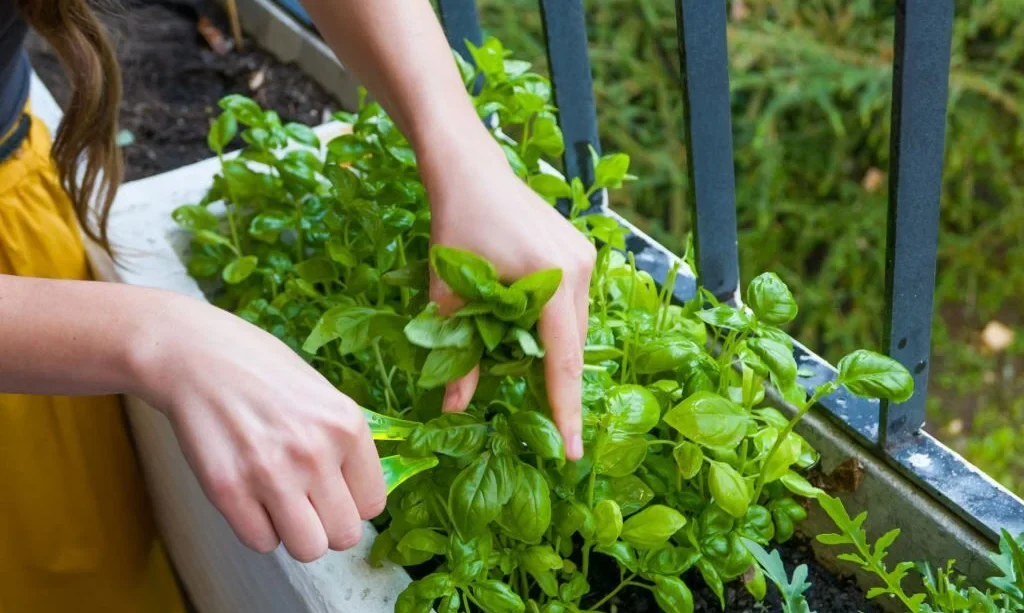Welcome to the fragrant world of basil, a beloved herb used in a variety of delicious dishes! If you’re a fan of growing basil, you might be wondering just how well it can handle chilly temperatures. In this article, we’ll explore the cold sensitivity of basil and help you understand its limits when it comes to cold weather. Let’s dive in and discover how to care for your basil during those frosty times!
- Large leaves with intense flavor & a wonderful aroma
- Garden use: Containers, herb beds, flower beds
- Culinary use: Italian & Asian dishes
- Plant in full sun for the best yields
- Plant after last spring frost
Basil’s Cold Sensitivity
Basil is a herb that thrives in warm and sunny conditions, making it less tolerant of cold temperatures. Originating from regions with Mediterranean climates, basil has a natural inclination for warmth and struggles when exposed to chilly weather.
- Warm Climate Origins: Basil hails from regions like Italy and Southeast Asia, where the sun shines bright and the temperatures stay mild year-round. These warm climates are perfect for basil’s growth and flavor development.
- Sensitivity to Cold: Basil is considered a warm-season annual herb, meaning it prefers temperatures above 50°F (10°C) to truly thrive. When temperatures drop below this threshold, basil becomes more susceptible to damage and struggles to grow and flourish.
- Chilling Injury: Basil can experience chilling injury when exposed to temperatures below 50°F (10°C) for an extended period. Symptoms of chilling injury include blackened leaves, wilting, and stunted growth.
Knowing that basil is not a fan of cold weather is essential for providing it with the care and protection it needs. Stay tuned as we explore the specific temperature range that basil prefers and how to protect your beloved basil plants during colder spells!
How Cold Can Basil Tolerate?
Now, let’s uncover just how cold basil can handle before it starts to struggle. While basil prefers warmer temperatures, it can tolerate a certain degree of cold, but there are limits to its resilience.
- Ideal Temperature Range: Basil thrives in temperatures between 50°F (10°C) and 85°F (29°C). Within this range, it grows vigorously, produces abundant foliage, and retains its aromatic flavor.
- Lower Temperature Threshold: When temperatures drop below 50°F (10°C), basil becomes less active and its growth slows down. It may also start to show signs of stress or damage.
- Frost Sensitivity: Basil is quite sensitive to frost, which occurs when temperatures dip below freezing (32°F or 0°C). Even a brief exposure to frost can cause severe damage to basil leaves, resulting in browning, wilting, and leaf death.
Factors Affecting Basil’s Cold Tolerance
Several factors can influence basil’s ability to tolerate cold temperatures. It’s important to consider these factors when determining how well your basil will fare during chilly spells.
- Plant Maturity: Young basil plants are generally more sensitive to cold compared to more mature ones. Established basil plants are better equipped to withstand temperature fluctuations.
- Soil Moisture: Basil plants with well-draining soil that retains appropriate moisture levels have a better chance of tolerating cold temperatures. Overly wet or waterlogged soil can make the plant more susceptible to cold damage.
- Environmental Conditions: Other environmental factors, such as humidity, wind, and sunlight, can impact basil’s ability to withstand cold. Windy conditions and prolonged exposure to low temperatures can increase the risk of damage.
By understanding the specific temperature range that basil prefers and the factors that affect its cold tolerance, you can make informed decisions to protect your basil plants during cooler weather. Stay tuned as we explore effective ways to shield your basil from the cold and ensure it continues to bring its delightful aroma and flavor to your culinary adventures!
- 【10FT X 30FT Rectangular Plant Cover】Sunpro plant cover measures 10x30ft, providing ample coverage for large areas. It can be easily cut with scissors to fit over conventional-width rows or used for wide-row plantings. When not in use, it should be folded and stored away from sun and moisture. Protect your plants from freeze, frost, strong sun, insects, and birds during spring, summer, late autumn and cold winter with our versatile plant cover.
- 【All-Purpose Floating Row Cover】Sunpro floating row cover is made from lightweight, breathable, and durable 1.0 oz/sq non-woven polypropylene fabric, perfect for plant covers freeze protection. You can cut it into different sizes for various uses. It keeps heat in, bugs out, and acts as an excellent windbreak for young transplants. The cover allows rain and overhead irrigation to reach plants and soil, making it an all-purpose option for your garden.
- 【Best Freeze Cloth for Outdoor Plants】Sunpro extra-stable plant blanket retains warmth while protecting against harsh weather, birds, animals, and insects. Made with Sunpro’s 1.0oz thick fabric, it is perfect for extending the growing season into early spring and late fall, and for insulating strawberries, herbs, perennials, small fruits, and other tender landscape plants all winter long. Our frost cloth is one of the best frost blankets for outdoor plants.
- 【Strong & Durable Reusing Plant Covers】Sunpro plant cover is made from high-quality materials and is strong and durable, making it ideal for use in heavy and dusty snow areas. It’s easy to install and cover your plants without wasting your time. Our frost cloth for outdoor plants is lightweight enough to allow air, water, and moisture to reach your plants without harming their growth process. It’s also reusable and will provide reliable protection season after season.
- 【Winterize Your Garden Easily & Safely】We stand behind the quality of our plant cover and offer a satisfaction guarantee. If you’re not completely satisfied with your purchase, please contact us, and we will refund or replace your product immediately. We’re committed to providing outstanding customer service support to assist you with your garden winterization needs. Protect your plants with absolute ZERO risk with our plant covers for winter.
Protection and Care for Basil in Cold Weather
To protect your basil from the chill of cold weather, here are some helpful tips to keep it thriving:
- Covering Plants: When frost or freezing temperatures are expected, cover your basil plants with a lightweight fabric, like a frost cloth or bedsheet. This acts as a barrier, trapping heat from the soil and protecting the plant from direct cold exposure.
- Mulching: Apply a layer of organic mulch, such as straw or shredded leaves, around the base of your basil plants. This helps insulate the soil, preventing rapid temperature changes and providing some protection to the plant’s roots.
- Indoor Transfer: If possible, consider moving potted basil plants indoors during periods of cold weather. Place them near a sunny window or under grow lights to provide sufficient light and warmth for continued growth.
- Watering Considerations: Be mindful of watering during cold weather. Reduce the frequency of watering, as the plant’s growth slows down and requires less moisture. Avoid overwatering, as excess moisture combined with cold temperatures can lead to root rot.
Common Cold-Related Issues for Basil
Despite your best efforts, there may still be some cold-related issues that your basil plants encounter. Here are a few common problems and how to address them:
- Leaf Damage: If your basil leaves turn black or become wilted after exposure to cold, it’s likely a result of chilling injury. Remove damaged leaves and provide proper care to promote new growth.
- Stunted Growth: Cold temperatures can slow down basil’s growth rate. Be patient and continue to provide optimal conditions, such as warmth and adequate sunlight, to encourage new growth.
- Pests and Diseases: Cold and damp conditions can make basil more susceptible to pests and diseases. Keep an eye out for signs of infestation or disease, and take appropriate measures to address them promptly.
Conclusion
As you enjoy the aromatic and flavorful delights of basil, it’s important to understand its cold sensitivity and take measures to protect it during chilly weather. By providing adequate care, such as covering plants, mulching, and adjusting watering practices, you can help your basil plants withstand the cold and continue to thrive.
Remember, basil is a warm-weather herb, so it’s natural for it to struggle in colder temperatures. However, with a little extra attention and care, you can keep your basil healthy and productive. So, don’t let the cold hold back your love for this incredible herb. Keep it protected, and soon enough, you’ll be enjoying fresh basil in your favorite culinary creations all year round!






